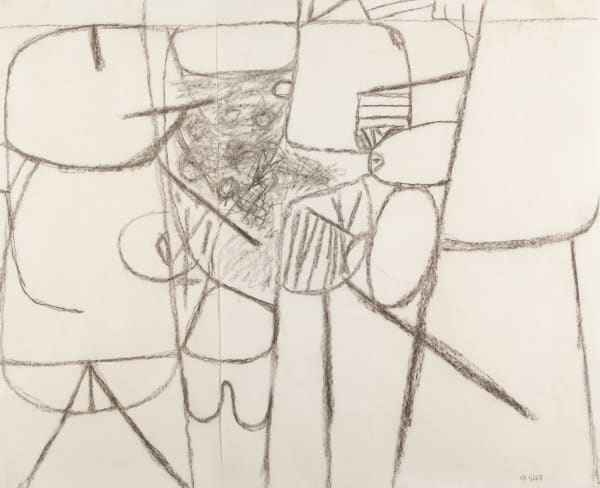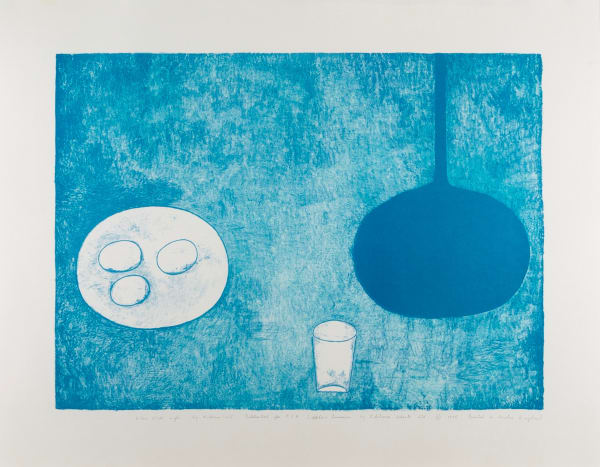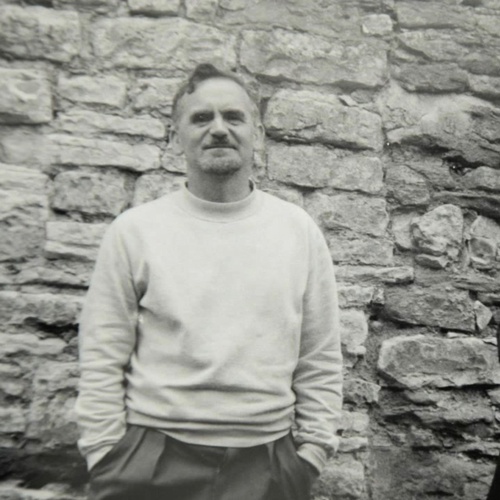William Scott Art for Sale1913-1989
-
 White, Brown and Black, 1979
White, Brown and Black, 1979 -
 Untitled, 1964
Untitled, 1964 -
 Black Pan on Grey, 1975
Black Pan on Grey, 1975 -
 Abstract Composition, 1959-1960 circa
Abstract Composition, 1959-1960 circa -
 Busby, from the Coronation Series, 1953
Busby, from the Coronation Series, 1953 -
 The Bird Cage, No.14, 1947
The Bird Cage, No.14, 1947 -
 Iona, 1961
Iona, 1961 -
 Scalpay, from Europäische Graphik I, 1963£ 4,250.00
Scalpay, from Europäische Graphik I, 1963£ 4,250.00 -
 Blue Still life, 1975£ 3,950.00
Blue Still life, 1975£ 3,950.00 -
 Skara Brae, 1959£ 3,250.00
Skara Brae, 1959£ 3,250.00 -
 Skara Brae, 1959£ 3,250.00
Skara Brae, 1959£ 3,250.00 -
 Areas Contrasted, from A Poem for Alexander, 1972£ 2,850.00
Areas Contrasted, from A Poem for Alexander, 1972£ 2,850.00
William Scott was a British artist, best known for his still life and abstract painting.
William Scott was born in Greenock, Scotland to Irish and Scottish parents, moving to Ulster when Scott was 11 years old where he spent the remainder of his early life. Scott studied first at Belfast College of Art (1928-1931) and later at the Royal Academy (1931-1935), where he shared accommodation with the poet Dylan Thomas. After completing his studies, Scott lived in France for several years, mainly in Port Avon and St Tropez, developing a life-long kinship with French still life painting. Jean-Baptiste-Siméon Chardin was particularly interesting to the artist during this period, later he would become more influenced by Georges Braque. Alongside French still life painting, Scott drew inspiration from pre-historic art and the untrained art of children.
The artist spent his adult life living in both London and Somerset, he was also a frequent visitor to the Cornwall where he connected with artists of the St Ives school and was particularly fond of the fishing village of Mousehole, which is depicted in his work. In 1953, Scott traveled to New York, becoming one of the first British artists to meet the Abstract Expressionists, including Jackson Pollock and Willem de Kooning. Mark Rothko would later visit the the Scotts in Somerset. The recipient of numerous awards throughout his career, including the Painters Prize at the John Moore’s Liverpool Exhibition (1959), Scott also represented Britain at the 1958 Venice Biennale.
Scott produced some landscapes and nudes but painted still life work for his entire career, he experimented with abstraction during the 1950s but these were always based within the tradition of still life. His work often bridged the gap between representation and abstraction, with motifs of objects such as cups, saucepans and frying baskets, still recognisable even in his later, more austere work, along with the flat planes of colour that often characterise his work. The artist compared his repeated depictions of kitchen objects to that of Braque’s frequent studies of guitars, 'if the guitar was to Braque his Madonna the frying pan could be my guitar’. While the subject matter remained much the same throughout Scott’s career, elements such as scale developed with his compositions becoming larger and the surface of the painting more laboured and worked.
Public collections representing Scott’s work include Tate Gallery which held retrospectives of his work in 1972 and 2013, Fitzwilliam Museum, Jerwood Foundation and the Guggenheim Museum, New York. His work was formally part of the private art collection of David Bowie. Scott’s early life was made into a film, ‘Every Picture Tells a Story’ by his artist and director son, James Scott.












